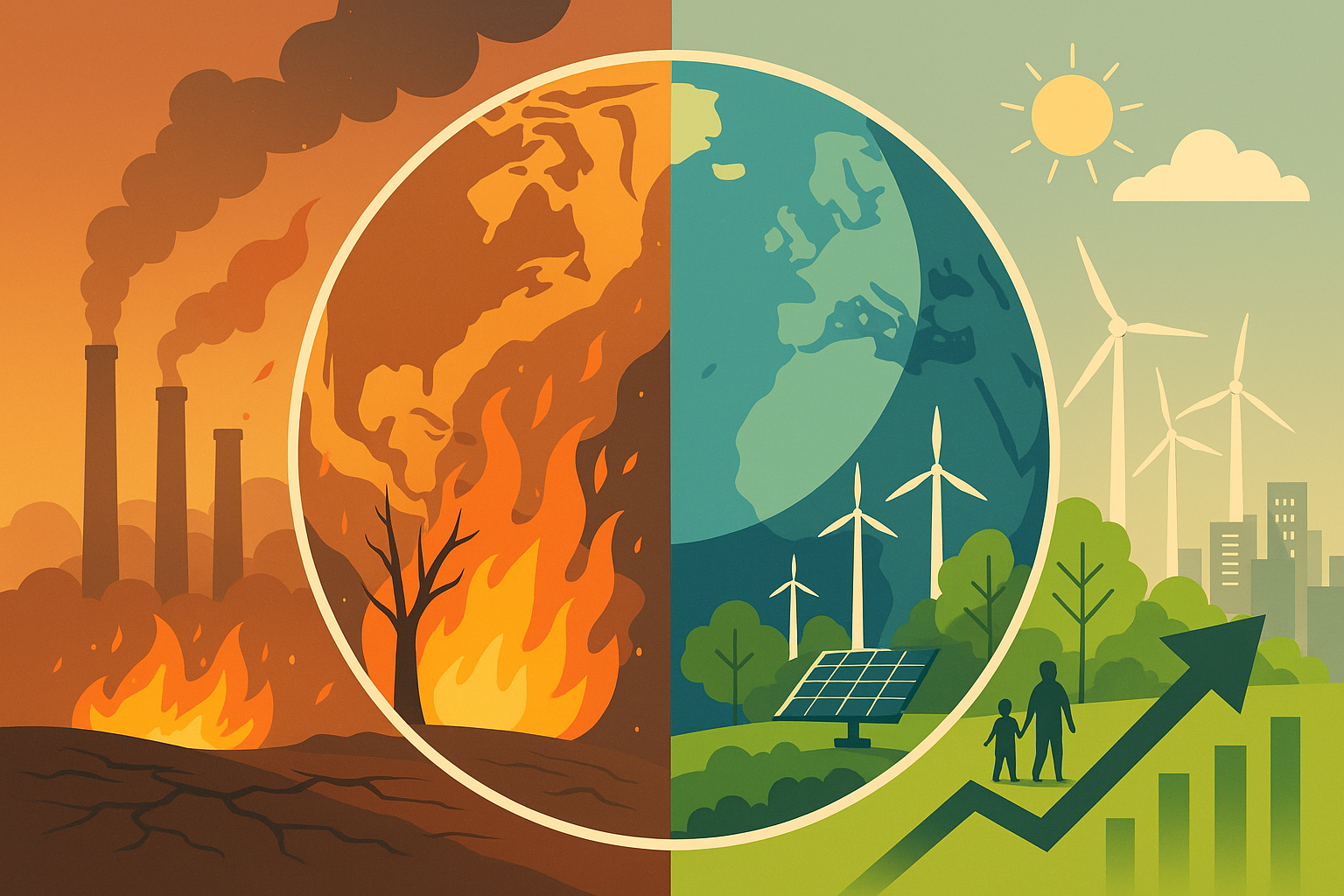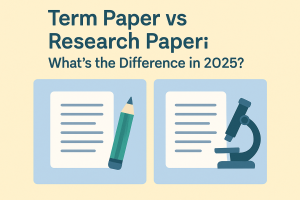Climate change represents the most significant environmental challenge facing humanity in the 21st century, fundamentally altering weather patterns, ecosystems, and human societies across the globe. Defined as long-term shifts in global temperatures and weather patterns, climate change has accelerated dramatically since the Industrial Revolution, primarily due to human activities that increase greenhouse gas concentrations in the atmosphere. While climate variations have occurred naturally throughout Earth’s history, the current rate and magnitude of change is unprecedented, demanding urgent attention from scientists, policymakers, and citizens worldwide. This essay explores the complex causes of climate change, examines its wide-ranging effects on both natural and human systems, and evaluates potential solutions that could mitigate this global crisis.
The Scientific Foundation of Climate Change
The scientific understanding of climate change rests on over a century of research demonstrating the greenhouse effect and its amplification through human activities. Greenhouse gases, including carbon dioxide, methane, and nitrous oxide, trap heat in Earth’s atmosphere by absorbing and re-emitting infrared radiation. This natural process maintains Earth’s temperature within a range suitable for life, but human activities have dramatically increased greenhouse gas concentrations, intensifying the warming effect.
Carbon dioxide levels have increased by over 40% since pre-industrial times, rising from approximately 280 parts per million in 1880 to over 410 parts per million today. This increase correlates directly with the burning of fossil fuels, deforestation, and industrial processes that release stored carbon into the atmosphere. The Intergovernmental Panel on Climate Change (IPCC), comprising thousands of climate scientists worldwide, has concluded with high confidence that human influence has warmed the planet at a rate unprecedented in at least the last 2,000 years.
Temperature records from around the world provide compelling evidence of ongoing warming. The last decade included nine of the ten warmest years on record, with global average temperatures rising approximately 1.1 degrees Celsius above pre-industrial levels. This warming may seem modest, but small changes in global average temperature correspond to significant shifts in regional climates, weather extremes, and ecosystem stability.
Primary Causes of Climate Change
Fossil Fuel Combustion
The burning of fossil fuels for energy production represents the largest single source of greenhouse gas emissions, accounting for approximately 75% of global carbon dioxide emissions. Coal-fired power plants, oil refineries, and natural gas facilities release billions of tons of carbon dioxide annually, while transportation systems contribute an additional 16% of global emissions through the combustion of petroleum products.
The scale of fossil fuel dependence becomes apparent when considering that global energy consumption has increased five-fold since 1950, with fossil fuels providing roughly 80% of this energy. Developing nations experiencing rapid industrialization have particularly increased their fossil fuel consumption, creating a challenging dynamic between economic development aspirations and climate protection goals.
Deforestation and Land Use Changes
Forests serve as crucial carbon sinks, absorbing carbon dioxide from the atmosphere and storing it in biomass and soil. However, widespread deforestation, particularly in tropical regions like the Amazon rainforest, eliminates these carbon sinks while simultaneously releasing stored carbon through burning and decomposition. Agricultural expansion, urban development, and logging operations destroy approximately 10 million hectares of forest annually.
Land use changes extend beyond deforestation to include agricultural practices that reduce soil carbon storage and wetland destruction that eliminates important carbon sequestration capacity. These changes not only release stored carbon but also reduce the planet’s natural ability to absorb future emissions.
Industrial Processes and Agriculture
Manufacturing industries contribute to climate change through both energy consumption and chemical processes that release greenhouse gases. Cement production, steel manufacturing, and chemical processing emit carbon dioxide through both fossil fuel combustion and chemical reactions inherent to these processes.
Agricultural practices contribute methane emissions through livestock digestion and rice cultivation, while also producing nitrous oxide through fertilizer use and soil management practices. Livestock farming alone accounts for approximately 14.5% of global greenhouse gas emissions, highlighting the climate implications of dietary choices and agricultural policies.
Effects of Climate Change
Environmental Impacts
Climate change manifests through numerous interconnected environmental effects that cascade through natural systems. Rising global temperatures have triggered widespread glacier retreat, Arctic sea ice loss, and thermal expansion of seawater, contributing to global sea level rise of approximately 20 centimeters since 1900. This sea level rise threatens coastal ecosystems, low-lying islands, and millions of people living in coastal areas.
Changing precipitation patterns have intensified both droughts and flooding in different regions, disrupting water supplies and agricultural productivity. Some areas experience more frequent and severe droughts, while others face increased flooding from more intense rainfall events. These changes stress water resources and food production systems that billions of people depend upon.
Ecosystem disruption represents another critical environmental effect, as species struggle to adapt to rapidly changing conditions. Coral reefs face bleaching events due to warmer ocean temperatures, while shifting climate zones force plant and animal species to migrate or risk extinction. These ecosystem changes threaten biodiversity and the ecological services that natural systems provide to human societies.
Societal and Economic Consequences
Climate change effects extend far beyond environmental systems to impact human societies, economies, and political stability. Extreme weather events, including hurricanes, heat waves, and floods, cause billions of dollars in damage annually while threatening lives and disrupting communities. The economic costs of climate change include both direct damages from extreme events and indirect costs from reduced agricultural productivity, infrastructure stress, and health impacts.
Public health faces significant challenges from climate change through multiple pathways. Heat stress directly threatens human health, particularly among vulnerable populations like the elderly and those with pre-existing conditions. Changing disease vector distributions expand the geographic range of vector-borne diseases like malaria and dengue fever, while air quality degradation exacerbates respiratory conditions.
Food security emerges as a major concern as changing precipitation patterns, rising temperatures, and extreme weather events disrupt agricultural systems. Some regions may benefit from longer growing seasons, but many important agricultural areas face reduced productivity due to heat stress, drought, or flooding. These changes particularly threaten food security in developing nations that lack adaptive capacity.
Solutions and Mitigation Strategies
Renewable Energy Transition
Transitioning from fossil fuels to renewable energy sources represents the most critical solution for reducing greenhouse gas emissions. Solar, wind, hydroelectric, and other renewable technologies have experienced dramatic cost reductions and efficiency improvements, making them increasingly competitive with fossil fuels. Many countries have demonstrated that economic growth can continue while reducing emissions through renewable energy deployment.
Energy efficiency improvements complement renewable energy expansion by reducing overall energy demand. Building retrofits, efficient transportation systems, and industrial process improvements can significantly reduce energy consumption while maintaining economic productivity and quality of life.
Policy and International Cooperation
Effective climate action requires coordinated policy responses at local, national, and international levels. Carbon pricing mechanisms, including carbon taxes and cap-and-trade systems, create economic incentives for emission reductions while generating revenue for climate investments. Regulatory approaches, such as renewable energy standards and vehicle emission requirements, establish mandatory targets for emission reductions.
International cooperation through agreements like the Paris Climate Accord provides frameworks for coordinated global action. However, the effectiveness of these agreements depends on national implementation and the willingness of countries to strengthen their commitments over time.
Individual and Community Actions
While systemic changes are essential, individual and community actions play important supporting roles in climate solutions. Energy conservation, sustainable transportation choices, and dietary modifications can reduce personal carbon footprints while demonstrating public support for climate action. Community-level initiatives, including local renewable energy projects and sustainable urban planning, create models for broader implementation.
Education and awareness campaigns help build public understanding of climate science and support for policy solutions. When individuals understand the connections between their choices and climate impacts, they become more likely to support necessary changes and adopt sustainable behaviors.
Conclusion
Climate change represents a complex global challenge that requires understanding both its scientific basis and its multifaceted impacts on natural and human systems. The evidence clearly demonstrates that human activities, particularly fossil fuel combustion and deforestation, have altered Earth’s climate system in ways that threaten environmental stability and human welfare. The effects of climate change, from sea level rise to extreme weather events, are already visible and will intensify without significant action to reduce greenhouse gas emissions.
However, solutions exist across multiple scales, from renewable energy technologies to international policy frameworks to individual behavioral changes. Success in addressing climate change requires coordinated action that combines technological innovation, policy reform, and social transformation. While the challenge is daunting, the combination of scientific understanding, technological capabilities, and growing public awareness provides reason for hope that humanity can rise to meet this defining challenge of our time.
The urgency of climate action cannot be overstated, but neither should the potential for human ingenuity and cooperation to create sustainable solutions. By understanding climate change as both a scientific phenomenon and a social challenge, we can work toward a future that protects both environmental systems and human prosperity for generations to come.


